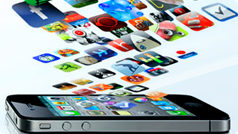
It's not just about the code
It's not just about the code. QR Codes have received a bad reputation for disappointing users who have had a poor experience after scanning them. Yet, by directing the user to some form of content, the code has served its purpose. Only in the event that a code doesn't scan (mistake #2) should it be the focal point of concern. In most cases, I have found, that it is the content that should receive the majority of the scrutiny. Keeping that in mind, here are the five most common mistakes advertisers make with QR Codes.- There is no testing before roll-out, otherwise, I would not be making the next four points. Always test your codes and mobile campaigns on as many different mobile devices as possible before you go live. For example, poorly created Designer QR Codes may scan on an iPhone, but not an Android or Blackberry.
- Code will not scan - As noted above, this is because the code has been improperly designed, printed or applied. Understanding the constraints of QR Codes will help you avoid mistakes. Code size, density, color, contrast and substrate for printing all must be considered.
- There is no call-to-action, offer or incentive to scan the code. In almost all cases, there should be some from of instruction accompanying each code letting the user know what to expect.
- Content to which the code points is not mobile-friendly or easy to browse on a mobile device. Knowing people are going to use a smartphone to scan the code, why would you direct them to anything less than a mobile optimized experience? Make sure your layout and content are mobile-friendly.
- Codes are placed in areas with no connectivity. Make sure your campaigns can be accessed in the actual areas you plan to advertise. Again, this goes back to testing #1.
A rebirth for QR Codes
There is a second wave of interest in QR Codes among big brands, especially in package design. Brands don't see bar codes going away anytime soon and they are benefiting on everything from Postal discounts to better user engagement by using them.
In closing, there's a lot more to QR Codes than meets the eye. Understanding how to use them to engage users correctly goes a long way in determining how useful your audience will find them to be.





Comments